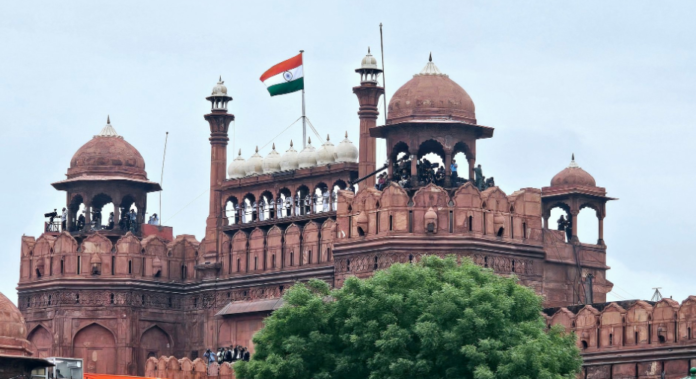India gained independence from British rule on August 15, 1947, after a long and complex struggle that involved various forms of resistance, political movements, and negotiations. Here’s an overview of how India achieved its independence:
1. Colonial Rule and Early Resistance
- The British East India Company established control over large parts of India in the 18th and early 19th centuries. Following the Indian Rebellion of 1857, the British Crown took direct control of India, marking the beginning of the British Raj.
- Early resistance to British rule began with the formation of the Indian National Congress (INC) in 1885, which initially sought greater political participation for Indians rather than full independence.
2. The Rise of Nationalism
- The late 19th and early 20th centuries saw a rise in Indian nationalism, with leaders like Bal Gangadhar Tilak advocating for self-rule (“Swaraj”). The Partition of Bengal in 1905 by the British led to widespread protests and strengthened the call for independence.
3. Mahatma Gandhi and Nonviolent Resistance
- Mahatma Gandhi emerged as a central figure in the independence movement, advocating for nonviolent civil disobedience (Satyagraha) against British rule. Key movements led by Gandhi included:
- Non-Cooperation Movement (1920-1922): A mass protest against British rule, urging Indians to boycott British goods, institutions, and honors.
- Civil Disobedience Movement (1930-1934): Marked by the famous Salt March, where Gandhi and his followers marched 240 miles to the Arabian Sea to make salt, defying British laws.
- Quit India Movement (1942): A mass protest demanding an end to British rule, which led to the arrest of many leaders, including Gandhi.
4. World War II and the Push for Independence
- During World War II, the British government, facing pressure both at home and abroad, promised India greater self-governance after the war. However, this was seen as insufficient by Indian leaders.
- The war weakened British control over India, as resources were diverted to the war effort, and global opinion began to favor decolonization.
5. Negotiations and the Partition
- Post-war negotiations between British officials, the INC, and the Muslim League led to the decision to partition India into two separate states: India and Pakistan. The Muslim League, led by Muhammad Ali Jinnah, demanded a separate nation for Muslims due to fears of marginalization in a Hindu-majority India.
- The Mountbatten Plan, presented by the last Viceroy of India, Lord Louis Mountbatten, in June 1947, outlined the partition of India and the creation of Pakistan. The Indian Independence Act was passed by the British Parliament in July 1947.
6. Independence and Partition
- On August 15, 1947, India officially gained independence, and Pakistan was created as a separate nation. Jawaharlal Nehru became the first Prime Minister of independent India.
- The partition led to one of the largest mass migrations in history, with millions of Hindus and Muslims crossing borders to join their chosen nation, resulting in significant communal violence and loss of life.
7. Legacy
- India’s independence marked the beginning of the end of the British Empire, as it inspired other colonies to seek freedom. The nonviolent approach of Gandhi became a model for civil rights movements worldwide.
India’s independence was the result of decades of persistent efforts by countless individuals and organizations, blending both nonviolent resistance and political negotiation and remains a significant chapter in world history.
Key Points:
- Colonial Rule: British East India Company established control over India in the 18th and 19th centuries, leading to direct British Crown rule after the 1857 rebellion.
- Early Resistance: The Indian National Congress (INC) was formed in 1885, initially seeking greater political participation rather than full independence.
- Rise of Nationalism: Indian nationalism grew in the late 19th and early 20th centuries, with leaders like Bal Gangadhar Tilak advocating for self-rule. The Partition of Bengal in 1905 intensified the call for independence.
- Mahatma Gandhi’s Role: Gandhi became central to the independence movement, leading nonviolent resistance through key movements like the Non-Cooperation Movement (1920-1922), Civil Disobedience Movement (1930-1934), and Quit India Movement (1942).
- World War II Impact: The war weakened British control, and global opinion favored decolonization, leading to promises of greater self-governance for India.
- Negotiations and Partition: Post-war negotiations led to the partition of India into India and Pakistan, with the Mountbatten Plan formalizing the process. The Indian Independence Act was passed in July 1947.
- Independence and Partition: India gained independence on August 15, 1947, with Jawaharlal Nehru as the first Prime Minister. The partition caused massive migration and communal violence.
- Legacy: India’s independence marked the decline of the British Empire and inspired global decolonization. Gandhi’s nonviolent approach became a model for civil rights movements worldwide.



